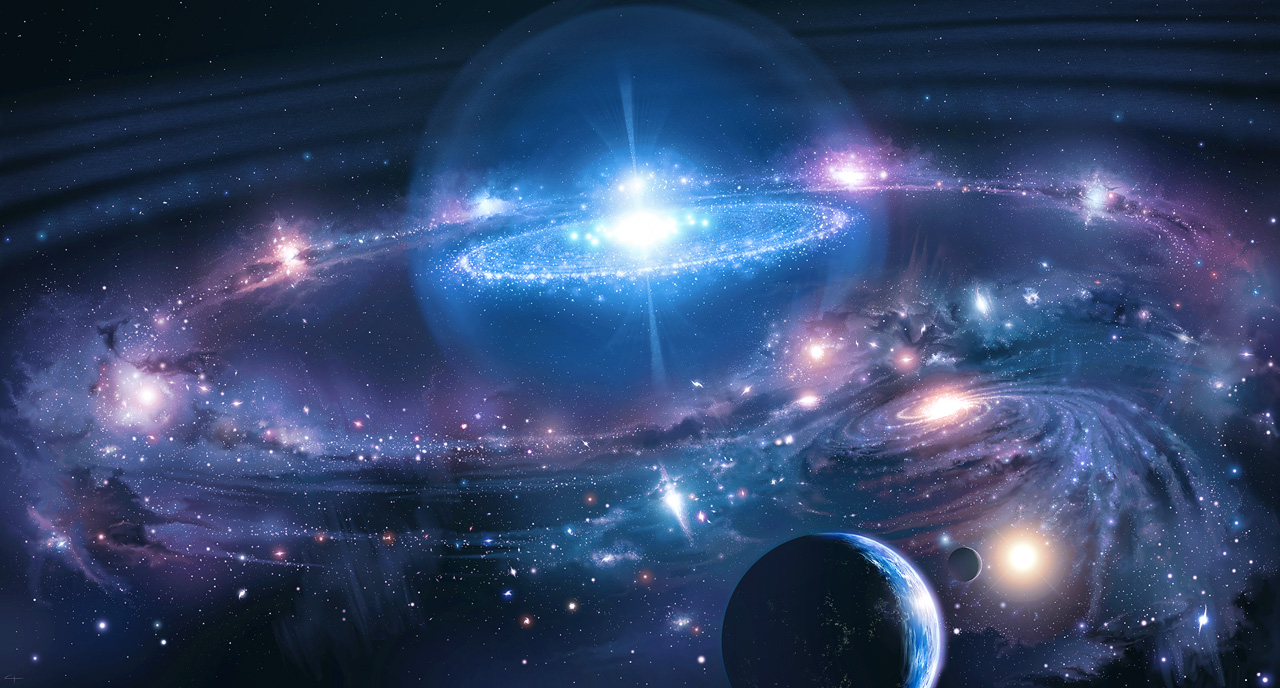According to the Lambda Cold Dark Matter (Lambda-CDM) model, which is the current accepted standard for how the universe began and evolved, the ordinary matter we encounter every day only makes up around five percent of the universe’s density, with dark matter comprising 27 percent, and the remaining 68 percent made up of dark energy, a so-far theoretical force driving the expansion of the universe.
But a new study has questioned whether dark energy exists at all, citing computer simulations that found that by accounting for the changing structure of the cosmos, the gap in the theory, which dark energy was proposed to fill, vanishes.
Published in 1915, Einstein’s general theory of relativity forms the basis for the accepted origin story of the universe, which says that the Big Bang kicked off the expansion of the universe about 13.8 billion years ago.
The problem is, the equations at work are incredibly complicated, so physicists tend to simplify parts of them so they’re a bit more practical to work with. When models are then built up from these simplified versions, small holes can snowball into huge discrepancies.
“Einstein’s equations of general relativity that describe the expansion of the universe are so complex mathematically, that for a hundred years no solutions accounting for the effect of cosmic structures have been found, we know from very precise supernova observations that the universe is accelerating, but at the same time we rely on coarse approximations to Einstein’s equations which may introduce serious side effects, such as the need for dark energy, in the models designed to fit the observational data.” says Dr László Dobos, co-author of the new paper.
Dark energy has never been directly observed, and can only be studied through its effects on other objects. Its properties and existence are still purely theoretical, making it a placeholder plug for holes in current models.
The mysterious force was first put forward as a driver of the universe’s accelerated expansion in the 1990s, based on the observation of Type Ia supernovae.
Sometimes called “standard candles,” these bright spots are known to shine at a consistent peak brightness, and by measuring the brightness of that light by the time it reaches Earth, astronomers are able to figure out just how far away the object is.
This research was instrumental in spreading acceptance of the idea that dark energy is accelerating the expansion of the universe, and it earned the scientists involved the Nobel Prize in Physics in 2011. But other studies have questioned the validity of that conclusion, and some researchers are trying to develop a more accurate picture of the cosmos with software that can better handle all the wrinkles of the general theory of relativity.
A comparison of three models of universal expansion: top left, in red, is the Lambda-CDM model, including dark energy; middle, in blue, is the new Avera model, which accounts for the structure and doesn’t require dark energy; and right, in green, is the original Einstein-de Sitter model, which also doesn’t include dark energy (Credit: István Csabai et al)
According to the new study from Eötvös Loránd University in Hungary and the University of Hawaii, the discrepancy that dark energy was “invented” to fill might have arisen from the parts of the theory that were glossed over for the sake of simplicity. The researchers set up a computer simulation of how the universe formed, based on its large-scale structure. That structure apparently takes the form of “foam,” where galaxies are found on the thin walls of each bubble, but large pockets in the middle are mostly devoid of both normal and dark matter.
The team simulated how gravity would affect matter in this structure and found that, rather than the universe expanding in a smooth, uniform manner, different parts of it would expand at different rates. Importantly, though, the overall average rate of expansion is still consistent with observations, and points to accelerated expansion. The end result is what the team calls the Avera model.
“The theory of general relativity is fundamental in understanding the way the universe evolves, we do not question its validity; we question the validity of the approximate solutions. Our findings rely on a mathematical conjecture which permits the differential expansion of space, consistent with general relativity, and they show how the formation of complex structures of matter affects the expansion. These issues were previously swept under the rug but taking them into account can explain the acceleration without the need for dark energy.” says Dobos.
If the research stands up to scrutiny, it could change the direction of the study of physics away from chasing the ghost of dark energy.
The research was published in the Monthly Notices of the Royal Astronomical Society, and an animation below compares the different models.









